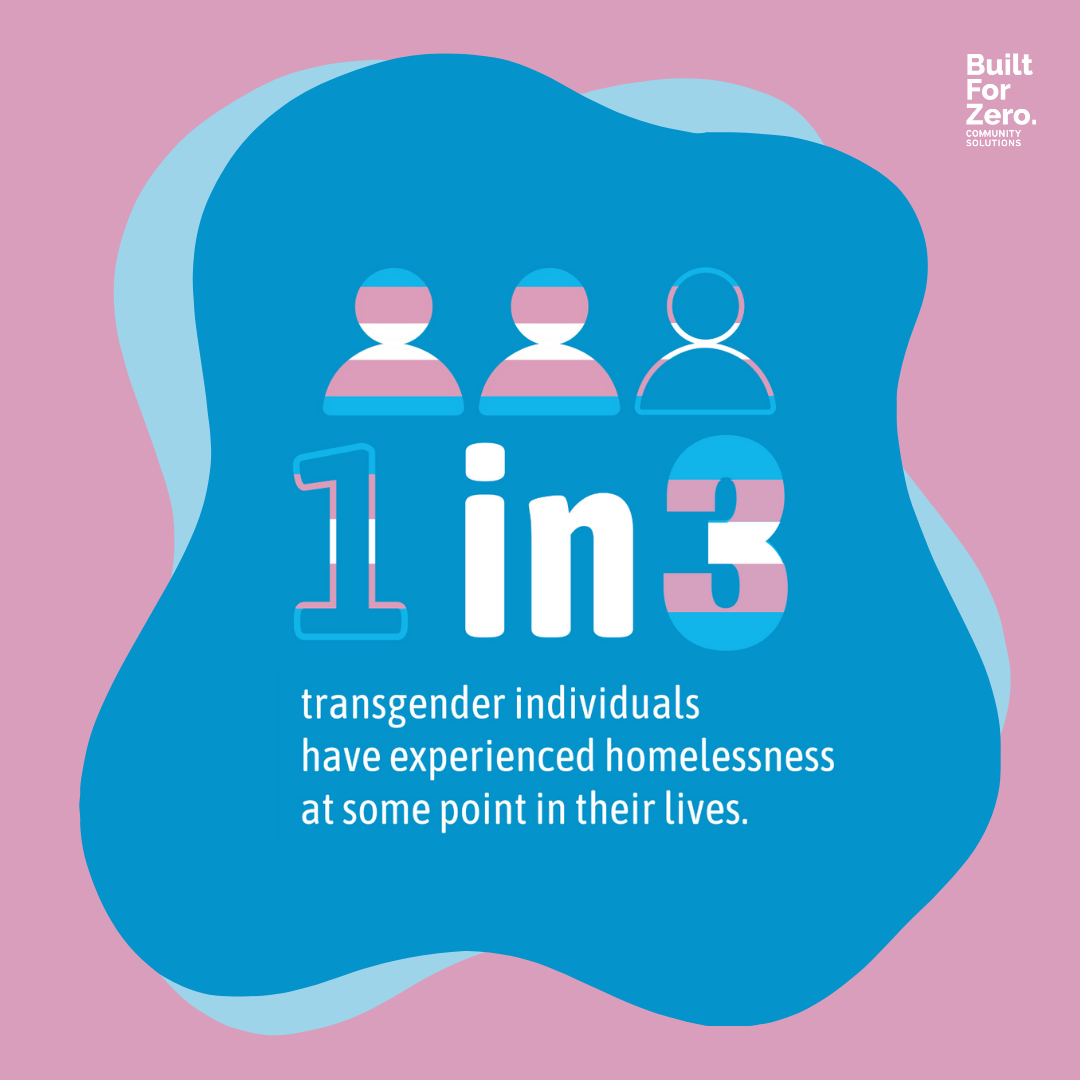How To Be A Better Ally On International Transgender Day Of Visibility

Table of Contents
Educate Yourself on Transgender Issues
Becoming a strong transgender ally starts with education. Understanding transgender identities, experiences, and the challenges faced by the community is crucial. This involves moving beyond basic awareness and delving into the complexities of gender identity and expression. Here's how you can begin:
-
Seek out reputable sources of information: Reliable sources like GLAAD, The Trevor Project, and the Human Rights Campaign offer comprehensive information on transgender issues. These organizations provide fact-based resources, combating misinformation and promoting understanding. Look for information that addresses topics such as gender identity, gender expression, and the difference between sex assigned at birth and gender identity.
-
Learn the difference between sex assigned at birth, gender identity, and gender expression: Understanding these key terms is fundamental to respectful communication and allyship. Sex assigned at birth refers to the sex assigned to an individual at birth based on their visible anatomy. Gender identity is an individual's internal sense of being a man, woman, both, neither, or somewhere else along the gender spectrum. Gender expression refers to how an individual outwardly presents their gender through clothing, behavior, and other means.
-
Understand the challenges transgender individuals face: Transgender people often face significant challenges, including discrimination, violence, and lack of access to healthcare and affirming medical care. Learning about these systemic issues helps to contextualize the need for allyship and advocacy. Many face barriers to employment, housing, and healthcare due to prejudice and lack of inclusive policies.
-
Read personal stories and narratives from transgender individuals: Gaining a deeper understanding of the transgender experience requires listening to the voices of transgender individuals. Reading personal accounts offers invaluable insight into the lived realities of transgender people and helps to humanize the conversation, making it less abstract and more relatable.
-
Explore resources that specifically address common misconceptions about transgender identities: Many misconceptions surround transgender identities. Actively seeking information that addresses and debunks these myths is an important step in becoming an informed and effective ally.
Actively Listen and Validate Transgender Experiences
Active listening and validation are paramount in building trust and fostering genuine allyship. It’s not enough to simply say you support the transgender community; you must demonstrate that support through your actions and interactions.
-
Create a safe space for transgender individuals to share their experiences without judgment: A safe space is crucial for open and honest communication. This requires creating an environment where individuals feel comfortable sharing their experiences without fear of criticism or ridicule.
-
Practice active listening: Active listening goes beyond simply hearing words. It involves focusing on understanding the speaker’s perspective, asking clarifying questions, and reflecting back what you hear to ensure you grasp their message correctly. Avoid interrupting or formulating your response while they are speaking.
-
Respect chosen names and pronouns: Using a transgender person's correct name and pronouns is a basic sign of respect. It demonstrates your acknowledgement of their identity and affirms their right to self-determination. If you make a mistake, correct yourself immediately and apologize sincerely.
-
Avoid asking intrusive or personal questions: Avoid questions that are overly personal or invasive. It's inappropriate to ask about someone's transition, medical procedures, or other private matters. Focus on building a relationship based on mutual respect and understanding.
-
Validate their feelings and experiences: Even if you don't fully understand someone's experience, validate their feelings by acknowledging their emotional reality. A simple "That sounds incredibly difficult" or "I can only imagine how that must feel" can go a long way in showing empathy and support.
Advocate for Transgender Rights and Inclusion
Allyship extends beyond personal interactions; it requires active advocacy for transgender rights and inclusion. This involves speaking out against injustice and working to create systemic change.
-
Support organizations fighting for transgender rights: Numerous organizations dedicate their work to advancing transgender rights and improving the lives of transgender people. Supporting these organizations through donations, volunteering, or advocacy helps to amplify their impact.
-
Advocate for inclusive policies in your workplace, school, or community: Advocate for policies that protect transgender individuals from discrimination and promote their inclusion in all aspects of society. This can include advocating for gender-neutral bathrooms, inclusive healthcare policies, and anti-discrimination laws.
-
Contact your elected officials to express your support for transgender rights legislation: Contacting elected officials to voice your support for legislation protecting transgender rights is a crucial way to make your voice heard and influence policy change.
-
Speak out against transphobia and discrimination whenever and wherever you see it: Challenging transphobic language, behavior, or policies is a vital aspect of allyship. This can range from gently correcting someone who misgenders a transgender person to publicly challenging transphobic statements or actions.
-
Educate others about transgender issues and the importance of allyship: Educating others is a powerful way to combat misinformation and promote understanding. Share resources, share stories, and participate in conversations about transgender issues to create a more informed and inclusive society.
Support Transgender Businesses and Creators
Supporting transgender-owned businesses and creators is a powerful way to demonstrate your allyship and contribute to the economic empowerment of the transgender community.
-
Actively seek out and support businesses owned or operated by transgender individuals: Research local businesses owned by transgender individuals and make a conscious effort to support them through your purchases. This directly contributes to their economic success and sends a message of support.
-
Purchase artwork, products, or services created by transgender artists and creators: Support transgender artists by purchasing their artwork, commissioning their work, or sharing their creations with others. This provides them with valuable income and promotes their visibility.
-
Share information about transgender-owned businesses and creators on social media: Spread the word about transgender businesses and creators by sharing their information on social media platforms. This helps to increase their visibility and attract more customers or clients.
-
Patronize businesses that actively support the transgender community: Support businesses that demonstrate a commitment to diversity and inclusion by employing transgender individuals, offering inclusive products or services, or donating to transgender organizations.
Conclusion
Becoming a better ally on International Transgender Day of Visibility and beyond requires ongoing effort and commitment. By educating yourself, actively listening, advocating for change, and supporting transgender individuals and businesses, you can make a real difference in creating a more inclusive and equitable world. This International Transgender Day of Visibility, let's renew our pledge to be active and effective allies for the transgender community. Let's continue to learn and grow as we work towards true gender equality and celebrate the unique contributions of transgender individuals. Let's be better allies in supporting transgender rights and amplify the voices of the transgender community. Let's make this International Transgender Day of Visibility a turning point in our commitment to allyship.

Featured Posts
-
 The Economic Impact Of Sports Stadiums On Urban Downtowns
May 10, 2025
The Economic Impact Of Sports Stadiums On Urban Downtowns
May 10, 2025 -
 The Crucial Role Of Middle Management Benefits For Companies And Employees
May 10, 2025
The Crucial Role Of Middle Management Benefits For Companies And Employees
May 10, 2025 -
 Europes Nuclear Future A French Perspective
May 10, 2025
Europes Nuclear Future A French Perspective
May 10, 2025 -
 Apple At The Ai Frontier Challenges And Opportunities
May 10, 2025
Apple At The Ai Frontier Challenges And Opportunities
May 10, 2025 -
 Uk To Restrict Student Visas Impact On Asylum Seekers
May 10, 2025
Uk To Restrict Student Visas Impact On Asylum Seekers
May 10, 2025
